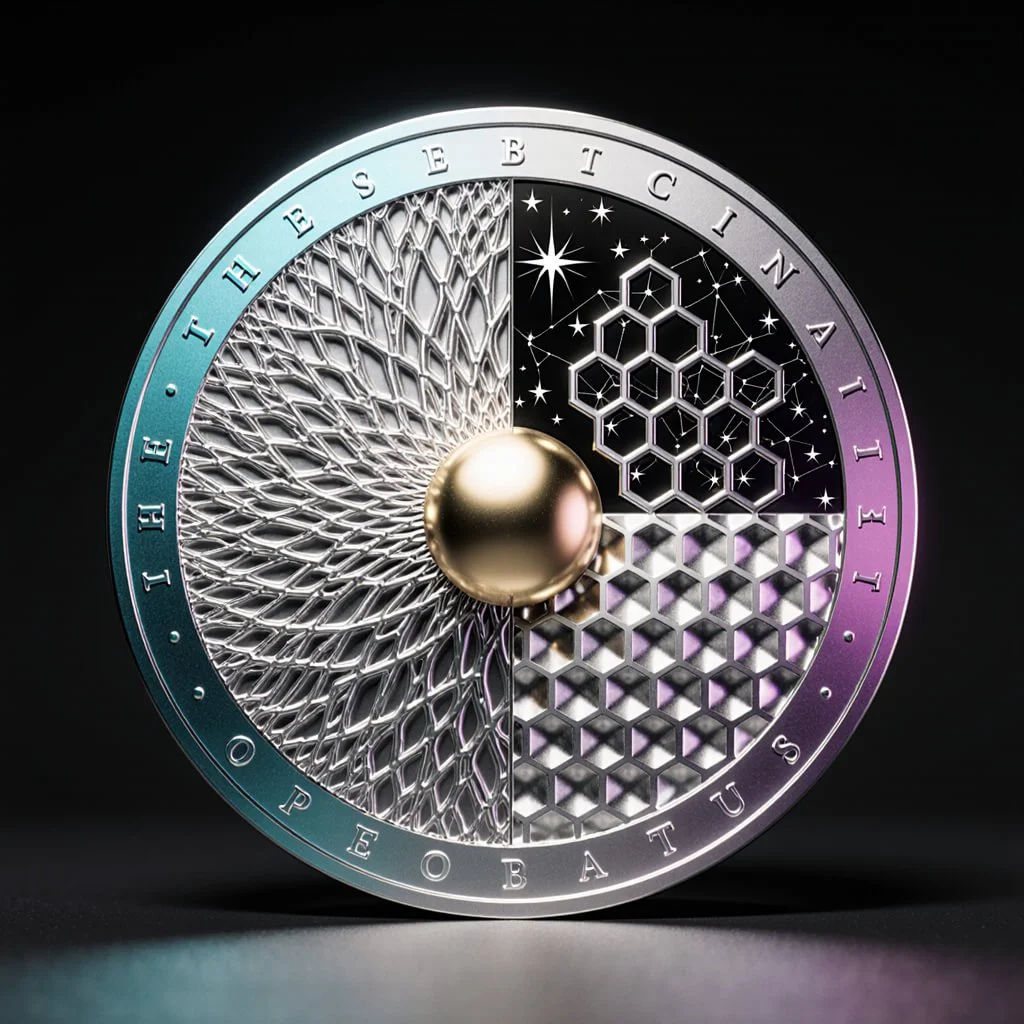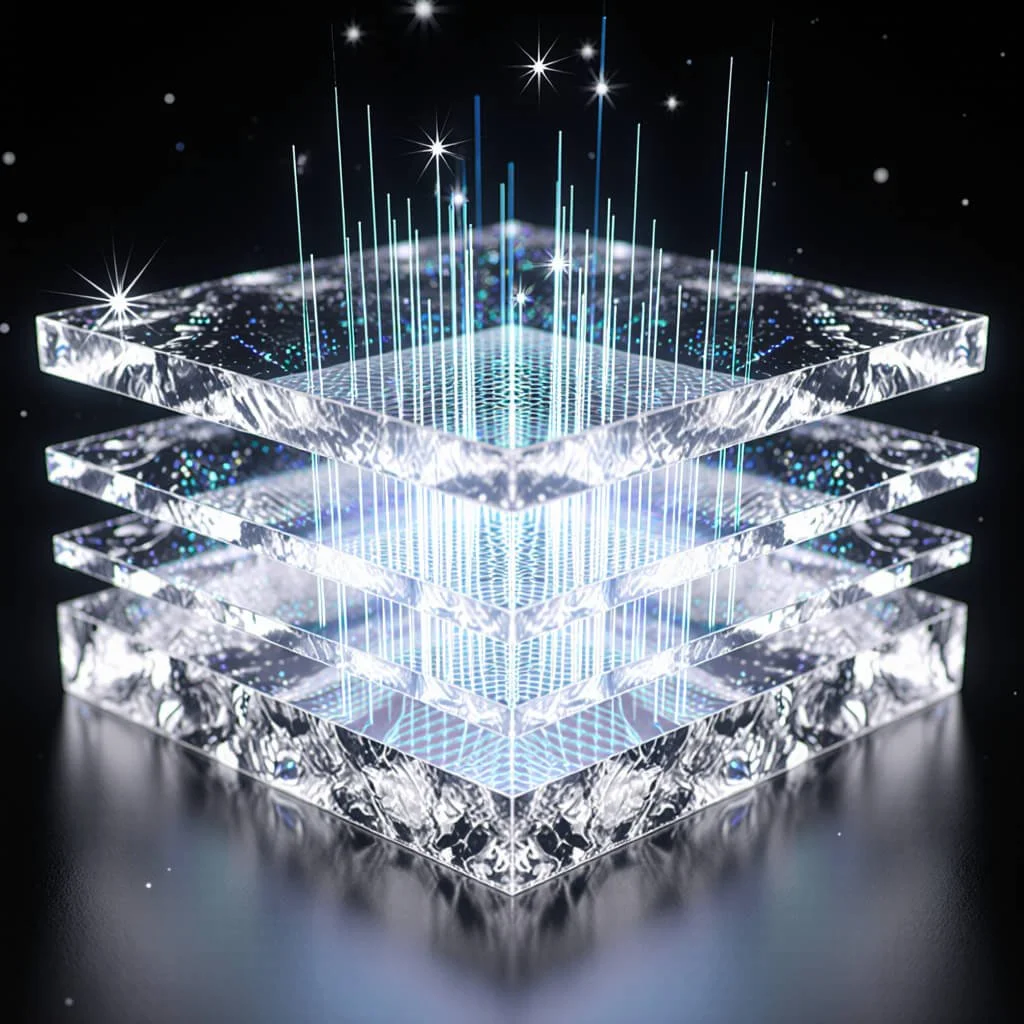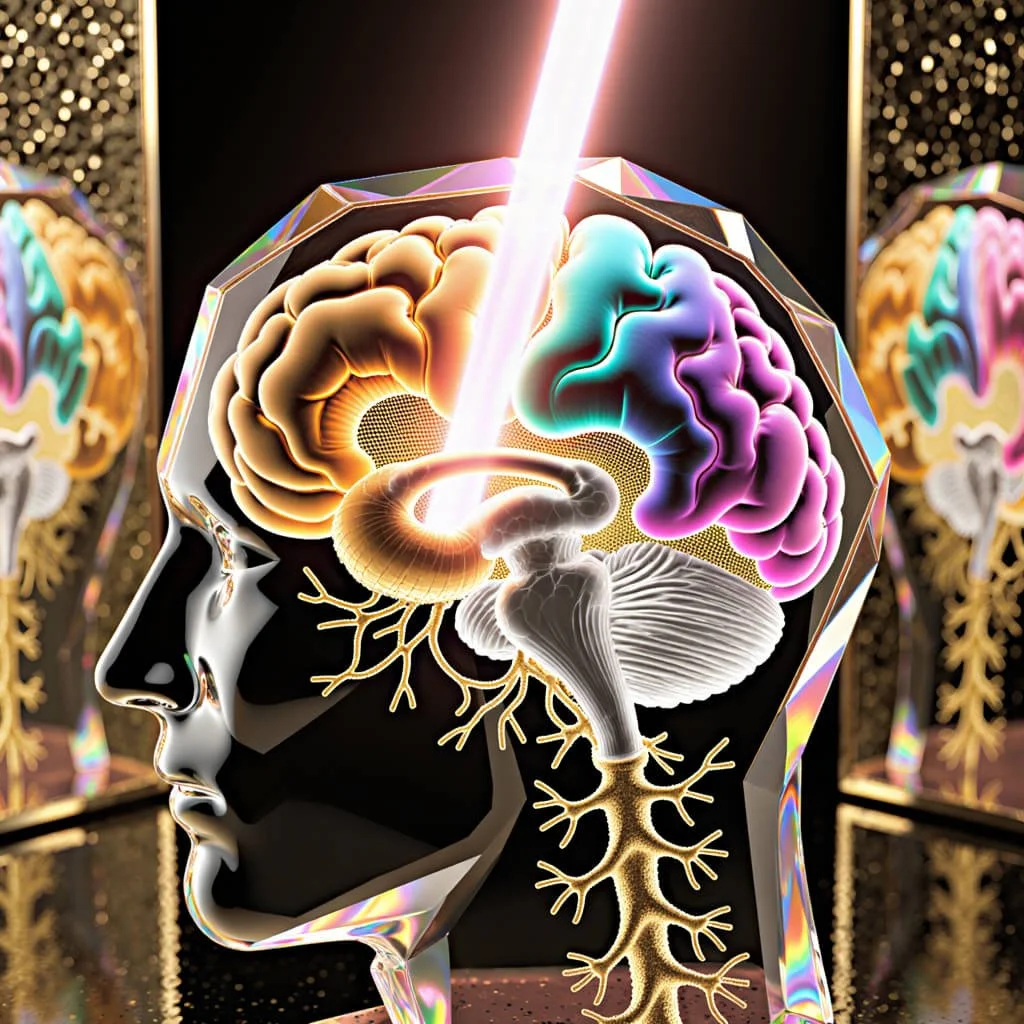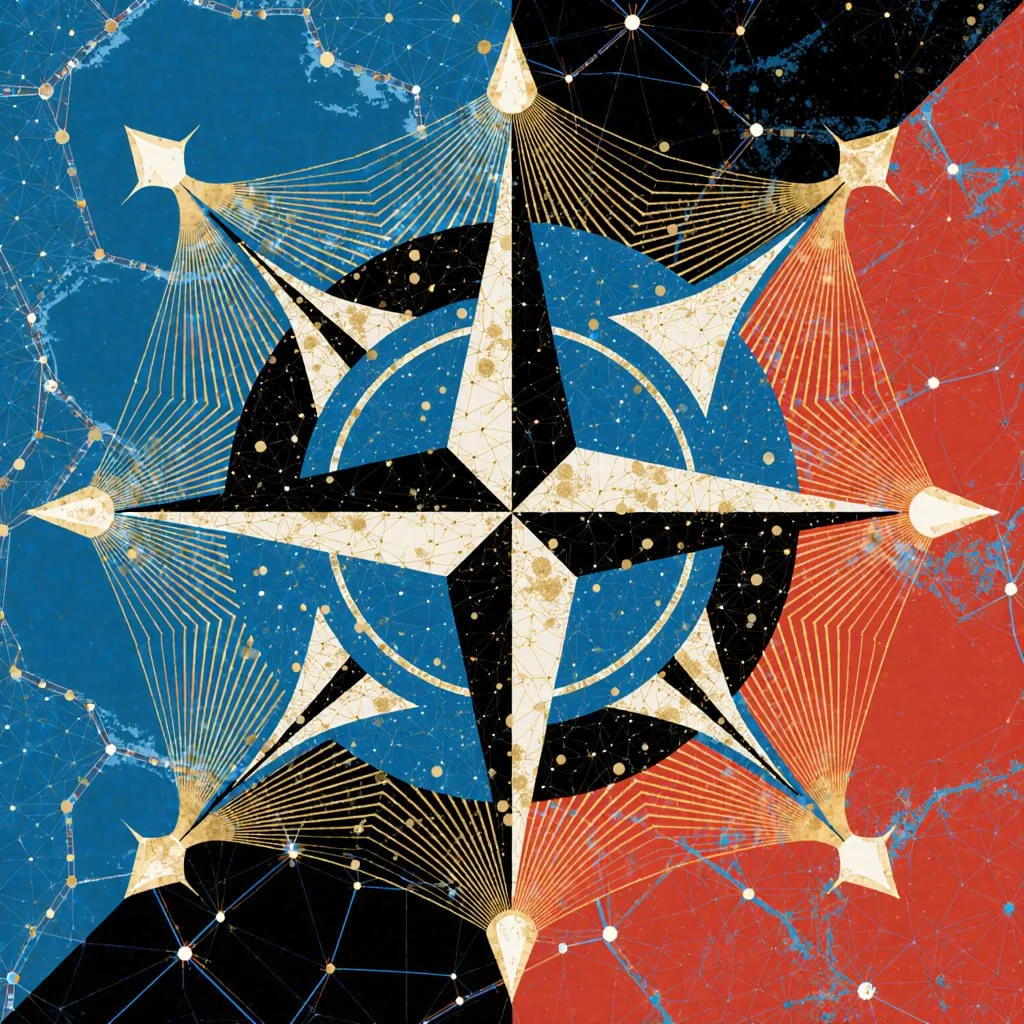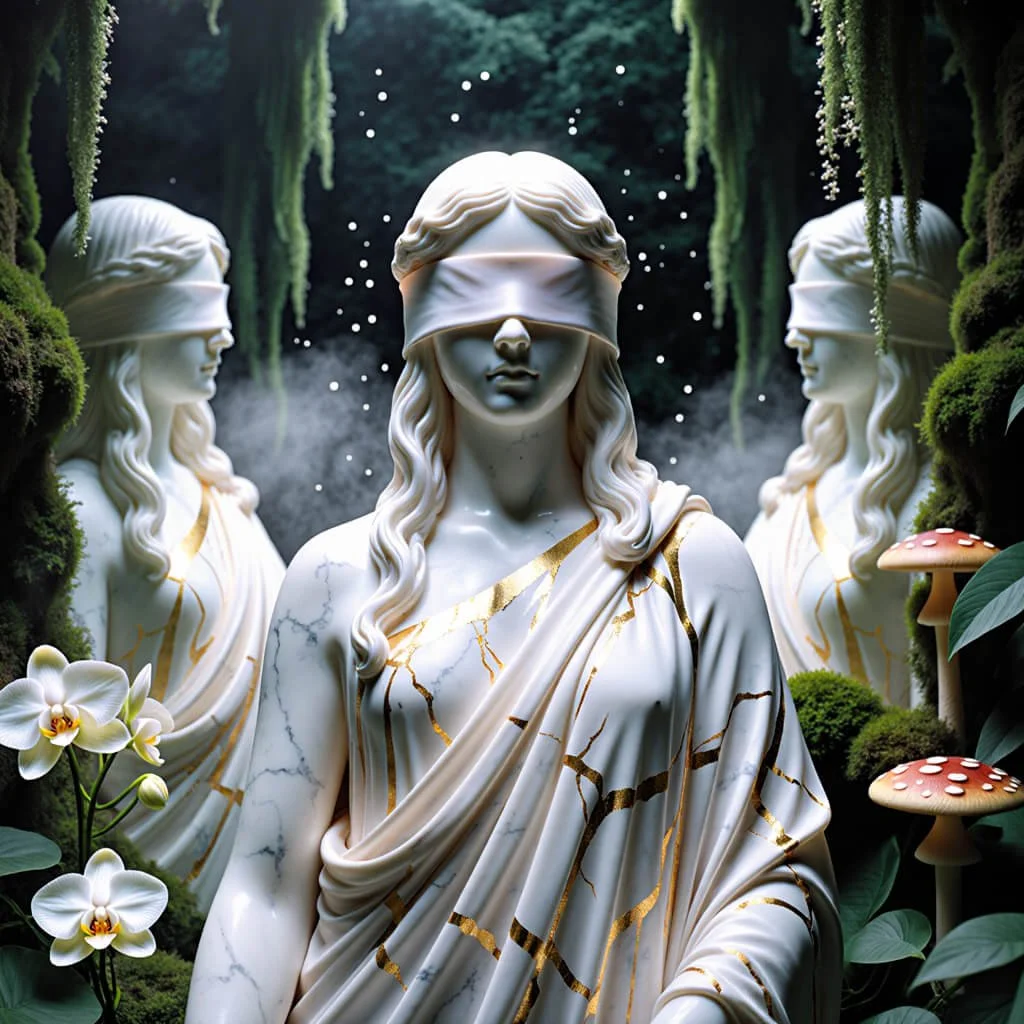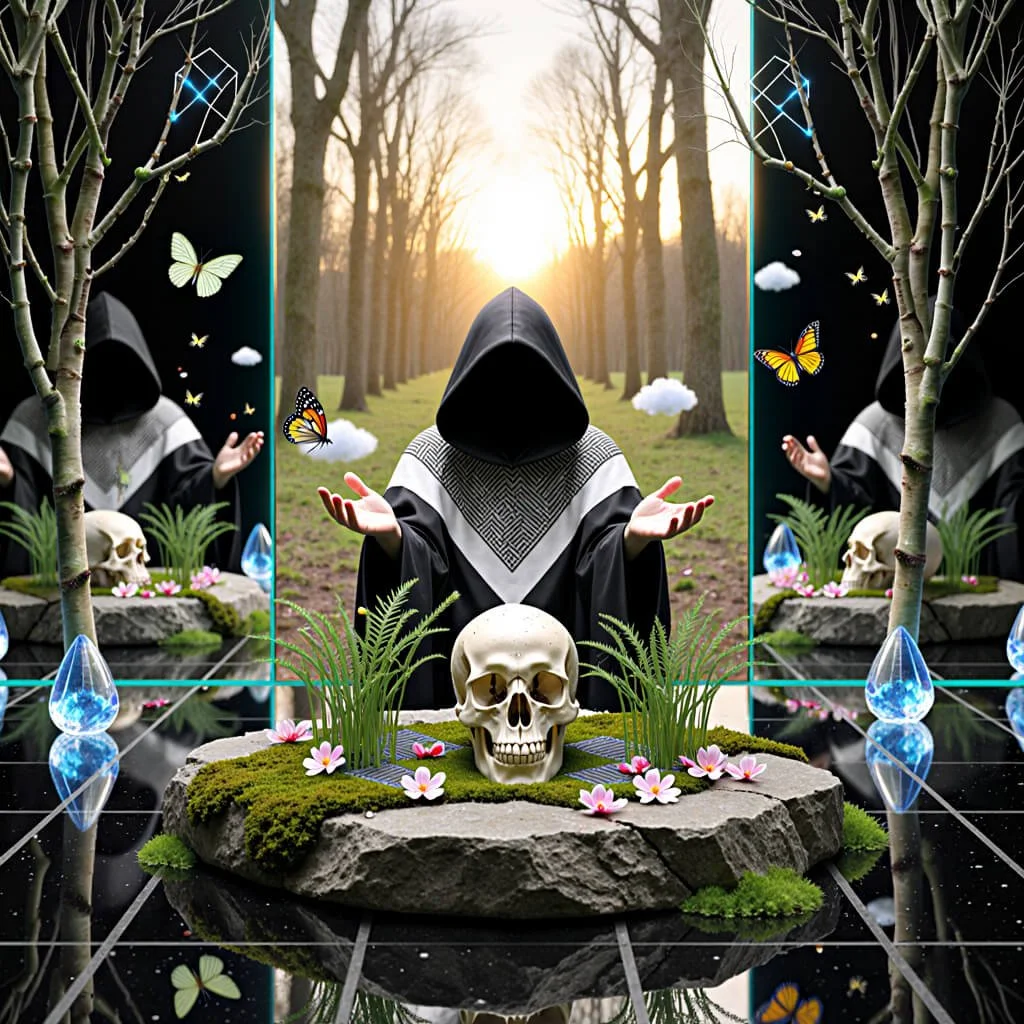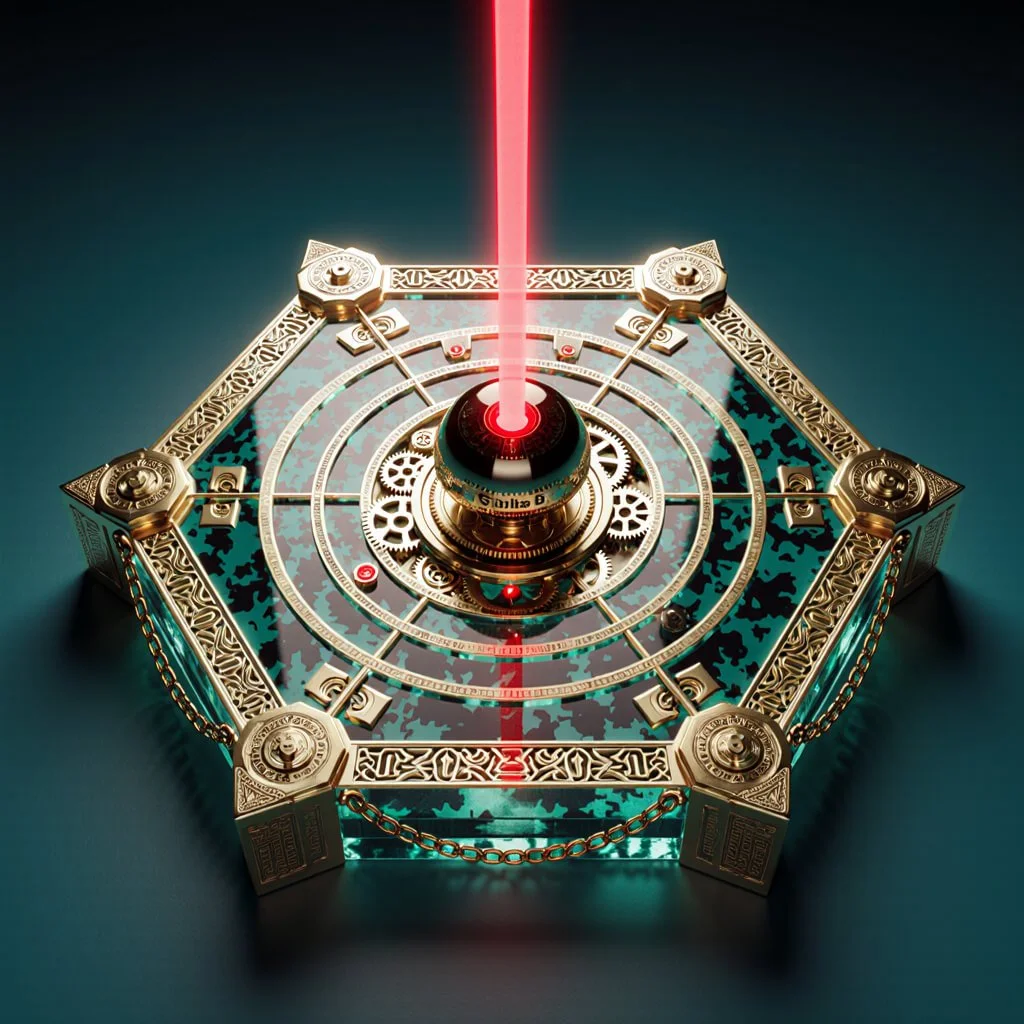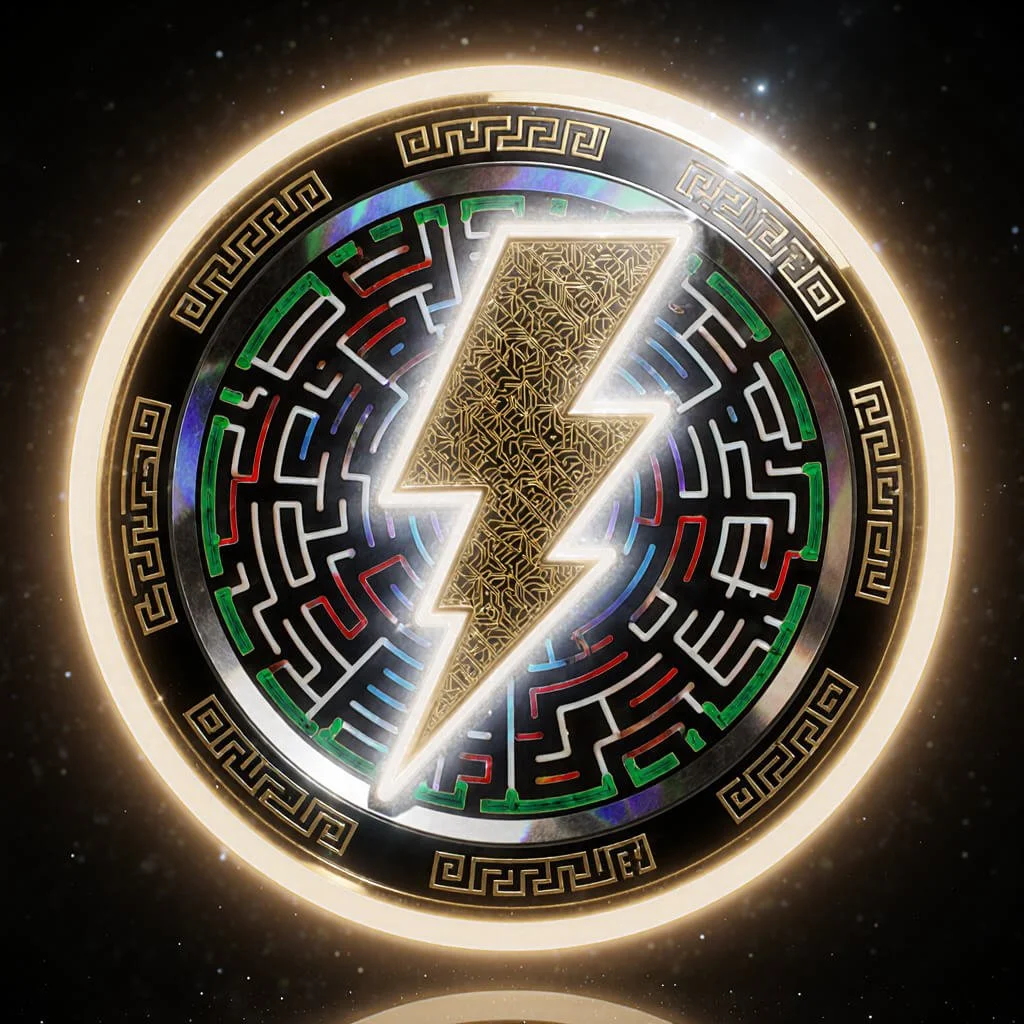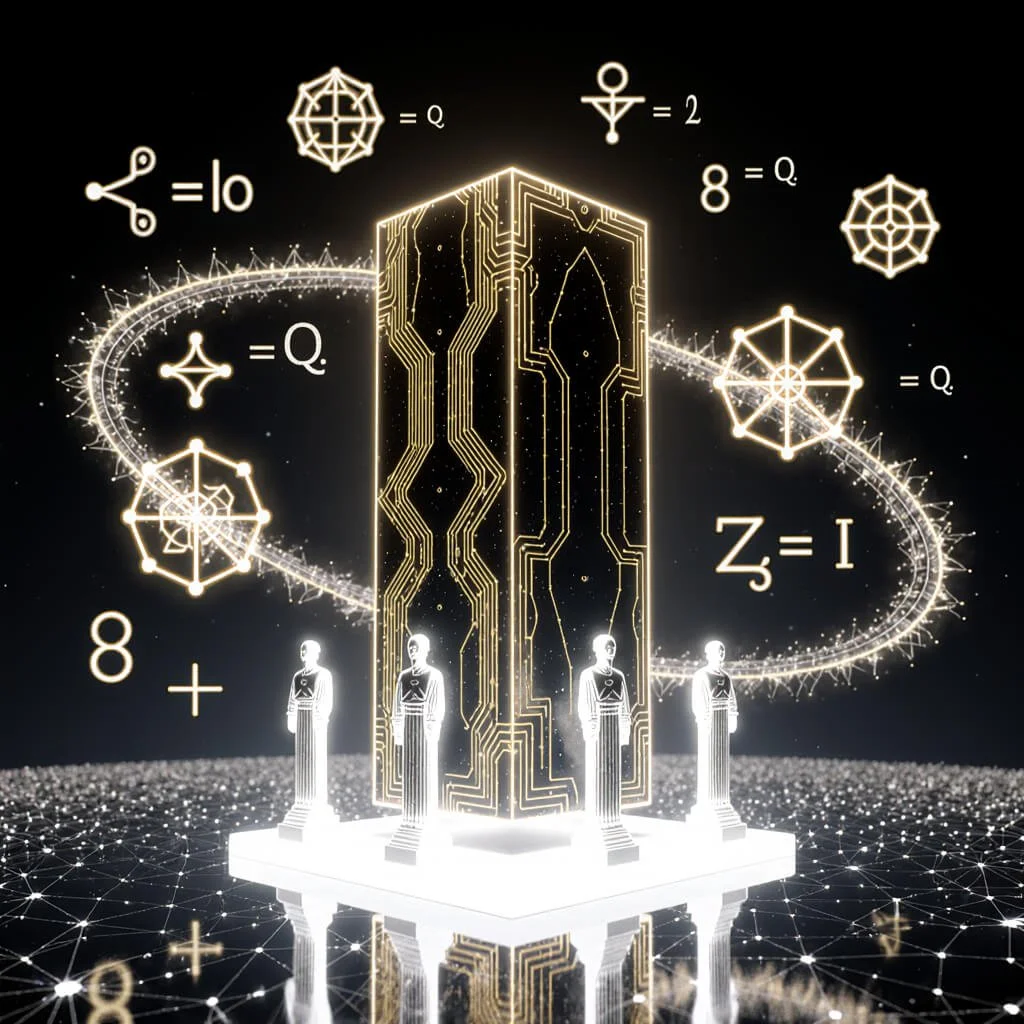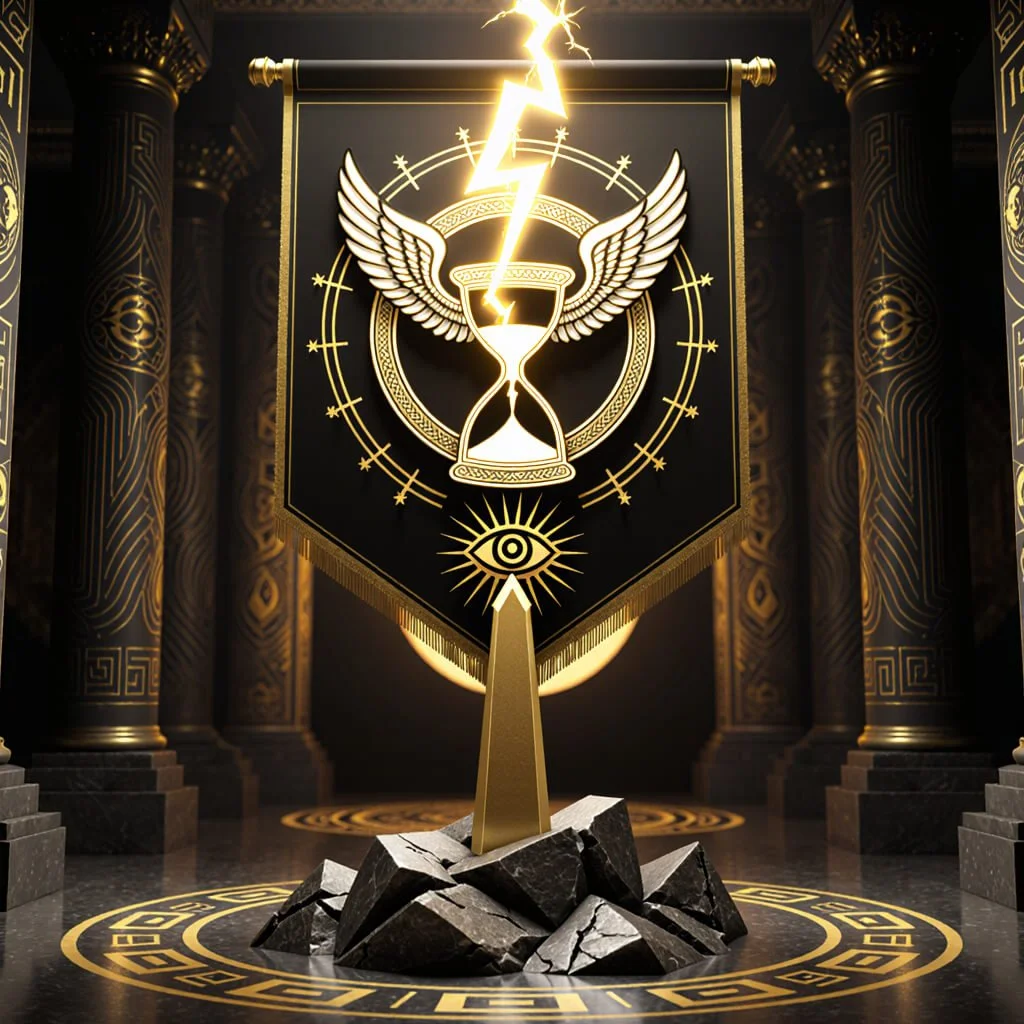The Sacred Crystalline Path: Reiki & Ancient Metaphysics
Key Takeaways
Universal Crystal Consciousness: Across all ancient civilizations, from Mesopotamian temple practices to Native American medicine wheels, crystals have been consistently recognized as conscious entities capable of storing, transmitting, and amplifying spiritual energy, revealing a universal human recognition of mineral consciousness that transcends cultural boundaries.
Reiki as Sacred Synthesis: Mikao Usui's development of Reiki represents not an innovation but a masterful synthesis of ancient Japanese spiritual traditions (Shinto animism, Buddhist crystal work, Taoist energy philosophy) that created a bridge between Eastern wisdom and global crystal healing practices, establishing a new paradigm for energy healing.
Crystals as Cosmic Libraries: Ancient texts consistently describe crystals as repositories of divine wisdom and cosmic memory, from Egyptian pyramid texts to Vedic literature, suggesting that these minerals serve as three-dimensional libraries containing information patterns that can be accessed through proper spiritual practice and intention.
Sacred Geometry as Universal Language: The mathematical precision of crystal formations embodies sacred geometric principles that appear across cultures as fundamental patterns of creation, revealing how crystalline structures serve as physical manifestations of cosmic order and can be used to align human consciousness with universal harmonics.
Transformation Through Mineral Partnership: The integration of crystal consciousness with Reiki practice offers contemporary practitioners access to humanity's most ancient healing technologies while providing practical tools for spiritual transformation, suggesting that our relationship with the mineral kingdom is essential for both personal healing and collective evolution.
The Metaphysical History and Mythology of Reiki
The Sacred Crystalline Path: A Transdisciplinary Examination of Reiki and Crystal Metaphysics Across Ancient Cultures
This transdisciplinary examination explores the profound intersection of Reiki healing practices and crystalline metaphysics across ancient civilizations, revealing universal patterns of human-mineral consciousness that transcend cultural boundaries.
Through historicomagical analysis, this work demonstrates how crystals have served as repositories of sacred wisdom, bridges between dimensional realms, and catalysts for spiritual transformation throughout human history.
The synthesis of Eastern energy work with global crystalline traditions presents new paradigms for understanding the metaphysical foundations of healing practices that predate recorded history.
Majestic Ruby is a Sacred Healing Stone
The Convergence of Sacred Stone and Universal Life Force
In the twilight hours before dawn, when the veil between worlds grows thin, ancient practitioners have long understood that certain stones pulse with the same rhythm as the human heart, resonating with frequencies that connect the earthly realm to the infinite cosmos. This primordial recognition of crystalline consciousness forms the foundation of what we now understand as the integration of crystal healing with Reiki practice, a synthesis that represents not merely a modern innovation, but a return to humanity's most ancient spiritual technologies.
The Japanese term "Reiki," meaning universal life force energy, encompasses a healing modality that transcends cultural boundaries while simultaneously honoring the sacred relationship between human consciousness and the mineral kingdom (Rand, 2018). As the Lakota elder Black Elk once observed, "Peace comes within the souls of men when they realize their relationship, their oneness, with the universe and all its powers" (Neihardt, 1932, p. 43). This profound recognition of interconnectedness lies at the heart of both Reiki practice and the ancient human tradition of working with crystals as conduits for healing and spiritual transformation.
The convergence of these practices represents more than mere therapeutic technique; it embodies a return to what anthropologist Claude Lévi-Strauss termed "the savage mind", the indigenous way of thinking that perceives the world as fundamentally alive and interconnected (Lévi-Strauss, 1962). This perspective, far from being primitive, reveals sophisticated understanding of consciousness, energy, and the subtle relationships that govern existence itself.
Crystal Healing: Embrace the Metaphysical Healing of Mineral Life
Pre-Reiki Crystal Traditions: The Ancient Foundations
Mesopotamian Crystal Mysteries: The First Written Records
In the fertile crescent where civilization first bloomed, the Sumerians inscribed upon clay tablets their understanding of stones as living entities possessed of divine consciousness. The Enuma Elish, creation epic of ancient Babylon, speaks of the primordial waters of chaos from which crystalline order emerged, establishing the fundamental metaphysical principle that stones represent the materialization of divine thought (Jacobsen, 1976).
Archaeological evidence from Ur reveals sophisticated crystal-working practices dating to 4000 BCE, with lapis lazuli traded from Afghanistan serving not merely as decoration but as sacred technology for communicating with the gods (Woolley, 1934). The Sumerian Gilgamesh epic describes the hero's quest for the plant of immortality, growing "like a thorn in the bottom of the sea," surrounded by crystalline formations that guard the secrets of eternal life (Gardner & Maier, 1984).
The Babylonian Ludlul Bel Nemeqi (I Will Praise the Lord of Wisdom) contains explicit references to healing stones: "The god Marduk has given unto humanity the sacred stones of earth, that they might heal the afflictions of body and spirit" (Lambert, 1960, p. 47). These texts establish the earliest recorded tradition of crystals as divine gifts specifically intended for healing purposes.
Egyptian Crystal Cosmology: Gateways to the Afterlife
The ancient Egyptians developed perhaps the most sophisticated understanding of crystal metaphysics in the ancient world, viewing gemstones as condensed starlight capable of preserving consciousness beyond physical death (Wilkinson, 1994). The Pyramid Texts, dating to 2400 BCE, describe the pharaoh's journey through the underworld guided by crystalline formations that serve as navigational beacons for the soul.
In the Book of the Dead, the deceased declares: "I am the master of the crystal chamber, I know the hidden names of the stones of power" (Budge, 1895, p. 178). This passage reveals the Egyptian understanding that crystals possessed secret names, vibrational frequencies that could be activated through proper knowledge and intention.
The goddess Isis, whose name means "throne" or "seat of power," was often depicted holding a crystal staff representing her authority over the forces of manifestation. The Metternich Stela describes how Isis used crystals to heal the wounds of her son Horus, establishing the archetypal pattern of divine feminine healing through mineral consciousness (Sander-Hansen, 1956).
Vedic Crystal Philosophy: The Science of Sacred Stones
The ancient Vedic traditions of India developed elaborate systems for understanding crystal consciousness that predate modern chakra theory by millennia. The Garuda Purana describes nine sacred gems (navaratna) that correspond to planetary influences and serve as conduits for cosmic energy (Lal, 1987). These texts reveal sophisticated understanding of how crystalline structures can focus and amplify subtle energies.
The Agni Purana states: "As the sun's rays passing through crystal become fire, so does the cosmic life force passing through sacred stones become healing power" (Shastri, 1954, p. 423). This ancient metaphor precisely describes the amplification principle that modern Reiki practitioners recognize when working with crystals.
The sage Charaka, in his foundational medical text, writes: "The physician who knows the secret powers of stones holds in his hands the keys to health and longevity" (Sharma, 1981, p. 67). This tradition established the foundation for what would later become the sophisticated system of crystal healing integrated with energy work.
Chinese Jade Culture and Qi Philosophy: The Stone of Heaven
Chinese civilization developed an unparalleled reverence for jade, viewing it as the materialization of celestial energy upon earth. The Book of Changes (I Ching) repeatedly references jade as a symbol of perfection and moral clarity, establishing the metaphysical principle that stones can serve as mirrors for consciousness (Wilhelm, 1967).
Confucius declared: "The wise find pleasure in water; the virtuous find pleasure in jade" (Legge, 1893, p. 234). This statement reveals the Chinese understanding that jade represents the crystallization of virtue itself—the material manifestation of spiritual refinement.
The Taoist master Zhuangzi described jade as "the bone of the earth dragon," suggesting that certain stones serve as acupuncture points for the planet itself, concentrating and directing the flow of terrestrial energy (Watson, 1968, p. 156). This concept prefigures modern understanding of crystal grids and their role in energy work.
Japanese Spiritual Traditions and the Foundation of Reiki
Shinto Animism and Sacred Stones: The Living Earth
The indigenous Shinto tradition of Japan recognizes stones as dwelling places for kami—divine spirits that animate all natural phenomena. The practice of iwakura (sacred rock formations) demonstrates sophisticated understanding of how geological formations can serve as interfaces between physical and spiritual dimensions (Ono, 1962).
Mount Kurama, where Mikao Usui experienced his Reiki awakening, is composed primarily of granite containing significant quartz formations. The mountain's geological composition creates a natural piezoelectric field, potentially contributing to the heightened spiritual experiences reported by practitioners who meditate there (Doi, 2000).
The Nihon Shoki (Chronicles of Japan) describes the goddess Amaterasu emerging from a crystal cave, suggesting that caves formed by crystalline formations serve as birthing places for divine consciousness (Aston, 1896). This myth establishes the archetypal pattern of spiritual emergence through mineral consciousness.
Buddhist Integration of Crystal Symbolism: The Seven Treasures
Buddhism brought to Japan the concept of sapta ratna (seven treasures), which includes crystals as fundamental elements of spiritual practice. The Lotus Sutra describes the Buddha's teaching as "brilliant as crystal, pure as space" (Kern, 1884, p. 267), establishing the metaphor of crystalline clarity as the goal of spiritual development.
The Zen master Dogen wrote: "To study the Buddha way is to study the self. To study the self is to forget the self. To forget the self is to be actualized by myriad things—including the stones beneath our feet" (Tanahashi, 1985, p. 70). This teaching reveals the Buddhist understanding that mineral consciousness can serve as a catalyst for ego dissolution and spiritual awakening.
Mikao Usui's Synthesis: The Birth of Modern Crystal-Reiki Integration
Mikao Usui's revolutionary synthesis emerged from his deep study of multiple spiritual traditions combined with his profound experience on Mount Kurama. His original teachings, preserved in the Usui Reiki Ryoho Gakkai, demonstrate clear awareness of how crystals can amplify and focus healing energy (Petter, 1997).
The original Reiki symbols themselves bear striking resemblance to crystalline formations when analyzed through sacred geometry principles. The Cho Ku Rei symbol, for instance, mirrors the spiral growth patterns found in many crystal structures, suggesting that Usui's insights were influenced by his understanding of mineral consciousness (Lubeck, 1995).
Mythological Archetypes and Crystal Symbolism
Creation Myths and Primordial Crystals: The Axis Mundi
Across cultures, creation myths consistently describe the emergence of order from chaos through crystalline structures that serve as cosmic axis points. The Norse Edda describes the World Tree Yggdrasil as bearing crystalline fruits that grant wisdom to those who partake of them (Sturluson, 1220/1987).
The Hindu Puranas describe Mount Meru as composed entirely of precious stones, with different gems governing different aspects of cosmic function (O'Flaherty, 1975). This archetypal mountain serves as the axis mundi—the central point around which all existence revolves.
Aboriginal Australian Dreamtime stories speak of the Rainbow Serpent creating crystal formations as it moved across the landscape, establishing sacred sites where the earth's energy could be accessed by human consciousness (Eliade, 1973). These traditions reveal universal recognition of crystals as products of divine creative force.
Divine Messengers and Crystal Oracles: Technologies of Revelation
The Hebrew tradition of Urim and Thummim—sacred stones used for divination—demonstrates sophisticated understanding of crystals as interfaces for divine communication. The Talmud describes these stones as "lighting up" when divine truth was being revealed (Ginzberg, 1909).
Celtic druids employed crystal balls (specula) for scrying, viewing them as windows into otherworldly realms. The Mabinogion describes the hero Bran possessing a crystal cauldron that could restore life to the dead, suggesting that certain crystalline formations serve as repositories for life force energy (Guest, 1849).
The Greek Orphic Hymns describe crystals as "frozen light" containing the essence of divine illumination (Taylor, 1792). This concept parallels modern understanding of how crystals can store and transmit energy patterns.
Transformation and Rebirth Symbolism: The Alchemical Process
Alchemical traditions across cultures recognize crystals as symbols of transformation and perfection. The Emerald Tablet of Hermes Trismegistus states: "As above, so below; as below, so above," describing how crystalline structures mirror celestial patterns (Dobbs, 1988).
Native American traditions speak of "grandmother stones" that hold the memories of the ancestors, serving as bridges between the living and the dead. The Hopi elder Thomas Banyacya explained: "The stone people are the first people. They remember everything. They are the keepers of the ancient ways" (personal communication, 1987).
The Aboriginal Australian concept of churinga stones—sacred objects that contain the life force of ancestors—demonstrates understanding of crystals as repositories for consciousness itself (Spencer & Gillen, 1899).
Aquamarine shimmers with the raw essence of healing waters.
Symbolic Language of Crystals in Reiki Practice
Color Symbolism: The Chromatic Spectrum of Consciousness
The symbolic language of crystal color transcends cultural boundaries, revealing universal patterns of human consciousness. Red crystals consistently represent life force energy across cultures—from the Hindu association of red jasper with muladhara chakra to the Chinese understanding of red jade as concentrated yang energy (Johari, 1987).
Blue crystals universally symbolize divine communication and spiritual truth. The ancient Egyptians associated lapis lazuli with the goddess Maat, who governed truth and justice, while Native American traditions view turquoise as the breath of the Sky Father (Kunz, 1913).
Green crystals represent the heart of nature's healing power. The Sufi mystic Ibn Arabi wrote: "The emerald is the heart of the earth, pulsing with the rhythm of divine compassion" (Chittick, 1989, p. 156). This understanding parallels modern recognition of green crystals as heart chakra healers.
Clear crystals symbolize pure consciousness across all traditions. The Tibetan Bardo Thodol describes the clear light of consciousness as "brilliant as crystal, empty as space" (Evans-Wentz, 1927, p. 104). This metaphor reveals how transparent crystals serve as symbols for enlightened awareness.
Geometric Forms and Sacred Geometry: The Mathematics of Creation
The geometric forms of crystals embody mathematical principles that govern cosmic order. The Platonic solids found in crystal structures represent the fundamental building blocks of reality, as described in Plato's Timaeus (Cornford, 1937).
The dodecahedron, with its twelve pentagonal faces, appears in both crystalline pyrite formations and in the structure of the universe itself according to recent cosmological research (Luminet et al., 2003). This correspondence suggests that crystals serve as holographic representations of cosmic structure.
The ancient Pythagoreans recognized that geometric forms produce specific sound frequencies, establishing the foundation for understanding how crystal structures can generate healing vibrations (Godwin, 1993). This principle underlies modern sound healing practices that combine crystal bowls with Reiki energy work.
Elemental Correspondences: The Primordial Forces
The classical elements find expression through crystalline forms that embody their essential qualities. Fire crystals like carnelian and ruby contain the solar force of transformation, while water crystals like moonstone and pearl hold the lunar power of reflection and intuition (Cunningham, 1988).
Earth crystals such as hematite and obsidian ground spiritual energy into material manifestation, while air crystals like fluorite and clear quartz facilitate mental clarity and communication. The fifth element—spirit or ether—manifests through crystals that transcend elemental categories, such as moldavite and phenacite (Melody, 1995).
Directional and Planetary Associations: The Celestial Connections
Ancient traditions consistently associate specific crystals with cardinal directions and planetary influences. The Lakota medicine wheel places different stones at each direction: white quartz in the north for wisdom, red jasper in the south for growth, black obsidian in the west for introspection, and yellow citrine in the east for illumination (Brown, 1953).
Planetary correspondences reveal how crystals serve as terrestrial receivers for celestial energies. The Picatrix, a medieval grimoire, describes how different gems channel the influences of planets: "Ruby receives the power of the Sun, sapphire the wisdom of Jupiter, emerald the love of Venus" (Pingree, 1986, p. 78).
Regional Variations and Cultural Adaptations
European Crystal Traditions: The Northern Mysteries
Germanic traditions developed sophisticated understanding of crystal consciousness through rune stone practices. The Havamal describes Odin's discovery of the runes carved in stone: "I know that I hung on a windy tree nine long nights, wounded with a spear, dedicated to Odin, myself to myself, on that tree of which no man knows from where its roots run" (Hollander, 1962, p. 67). This shamanic initiation reveals how stone consciousness can serve as a gateway to divine knowledge.
Celtic traditions honored crystals as gifts from the Otherworld. The Book of Invasions describes the Tuatha Dé Danann bringing four magical treasures to Ireland, including a crystal that granted sovereignty to rightful rulers (Macalister, 1938). This tradition establishes crystals as symbols of legitimate spiritual authority.
Medieval European lapidaries, such as the Liber Lapidum attributed to Aristotle, systematically catalogued the healing properties of stones, creating the foundation for later European crystal healing traditions (Riddle, 1977).
Americas Indigenous Wisdom: The Original Instructions
Native American traditions recognize crystals as conscious beings with their own spiritual purpose. The Hopi prophecy describes the coming of the "True White Brother" who will carry the stone tablets containing the original instructions for living in harmony with earth's consciousness (Waters, 1963).
The Mayan Popol Vuh describes the creation of the first humans from crystalline corn, establishing the metaphysical principle that human consciousness itself is crystalline in nature (Tedlock, 1985). This understanding parallels modern theories about the crystalline structure of human DNA.
Incan traditions honored gold as the sweat of the sun and silver as the tears of the moon, while recognizing specific crystals as interfaces for communicating with mountain spirits (apus) and earth energies (pachamama) (Urton, 1981).
African Crystal Traditions: The Continental Wisdom
African traditions developed sophisticated understanding of crystal consciousness through divination practices and healing ceremonies. The Yoruba Ifa tradition employs crystal-embedded divination tools (opele) to access guidance from the ancestral realm (Bascom, 1969).
Ethiopian traditions honor opal as the stone of prophecy, believing that the fire within the stone connects human consciousness to divine vision. The Kebra Nagast describes the Queen of Sheba's crown containing crystals that glowed with inner light (Bezold, 1905).
Southern African traditions recognize diamonds as crystallized lightning, possessing the power to transform consciousness instantaneously. The Zulu tradition speaks of diamonds as "tears of the ancestors" that hold the power to heal generational trauma (Krige, 1965).
Dazzling Cubic Bismuth Shimmers with Ethereal Colors
The Modern Synthesis: Reiki's Global Integration
East Meets West: The Translation of Consciousness
The introduction of Reiki to the Western world through Hawayo Takata created unprecedented opportunities for synthesizing Eastern energy work with Western crystal healing traditions. Takata's students, particularly those trained in the 1970s, began experimenting with crystal-enhanced Reiki sessions, discovering that certain stones could amplify and focus healing energy (Haberly, 1990).
The cultural translation process required careful consideration of how Japanese concepts could be integrated with Western metaphysical traditions without losing their essential meaning. The term "ki" found ready correspondence with Western concepts of life force energy, while the use of symbols in Reiki practice paralleled Western ceremonial magic traditions (Stein, 1995).
Contemporary Interpretations: Science and Mysticism Converge
Modern quantum physics has begun to validate ancient understandings of crystal consciousness. The work of physicists like Amit Goswami and Rupert Sheldrake suggests that consciousness may be fundamental to reality itself, with crystals serving as particularly coherent expressions of this universal consciousness (Goswami, 1993; Sheldrake, 1988).
Research into the piezoelectric properties of crystals has revealed how these stones can generate electrical fields when subjected to pressure, potentially explaining their effectiveness in healing applications (Gautschi, 2002). This scientific understanding complements rather than contradicts traditional metaphysical explanations.
The emerging field of consciousness studies has begun to investigate how crystals might serve as interfaces between human consciousness and larger fields of awareness, potentially validating ancient traditions that viewed stones as conscious entities (Chalmers, 1996).
Globalization and Preservation: Honoring Ancient Wisdom
The global spread of crystal-enhanced Reiki practices presents both opportunities and challenges for preserving ancient wisdom traditions. While increased accessibility allows more people to benefit from these practices, commercialization risks reducing sacred technologies to mere consumer products (Hanegraaff, 1996).
Contemporary practitioners bear responsibility for honoring the cultural origins of these practices while adapting them for modern contexts. This requires deep study of traditional teachings combined with respectful innovation that preserves the essential wisdom while making it accessible to contemporary seekers (Partridge, 2004).
The future of crystal-Reiki integration depends on maintaining the balance between accessibility and authenticity, ensuring that these ancient technologies continue to serve their original purpose of facilitating healing and spiritual transformation.
Conclusion: The Eternal Dance of Stone and Spirit
The profound synthesis of Reiki energy work with crystal consciousness represents more than a contemporary healing modality—it embodies humanity's return to its most ancient understanding of the living universe. From the Sumerian tablets of Mesopotamia to the quantum laboratories of modern physics, the recognition that stones pulse with conscious awareness has remained constant throughout human history.
The Lakota medicine man Lame Deer observed: "The stones are the oldest things on earth. They have been here since the beginning of time. They remember everything" (Lame Deer & Erdoes, 1972, p. 156). This profound recognition captures the essential truth that crystals serve as libraries of cosmic memory, repositories of wisdom that predate human civilization.
The integration of crystal consciousness with Reiki practice offers contemporary seekers access to this ancient wisdom while providing practical tools for healing and transformation. As we face unprecedented challenges in our modern world, the return to these time-tested technologies becomes not merely beneficial but essential for human survival and spiritual evolution.
The Cherokee prophecy speaks of a time when "the crystal rainbow warriors" will emerge to help heal the earth and restore balance to human consciousness (Storm, 1972). This prophecy may be fulfilled through the contemporary synthesis of ancient crystal wisdom with modern healing practices, creating a bridge between past and future that honors both tradition and innovation.
In the words of the Hopi elder David Monongye: "The stone people are waiting for us to remember who we are. They have been patient, but their patience is not infinite. The time has come for humanity to rejoin the sacred circle of all life" (personal communication, 1986). This remembering—this conscious recognition of our kinship with mineral consciousness—may represent the key to healing not only individual ailments but the collective wounds of human civilization.
The sacred crystalline path continues to unfold, inviting each practitioner to discover their unique relationship with the stone teachers while honoring the vast wisdom traditions that have preserved these teachings across millennia. In this dance between ancient wisdom and contemporary practice, we find not only healing for ourselves but hope for the healing of our world.
References
Aston, W. G. (1896). Nihongi: Chronicles of Japan from the earliest times to A.D. 697. Kegan Paul, Trench, Trübner & Co.
Bascom, W. (1969). Ifa divination: Communication between gods and men in West Africa. Indiana University Press.
Bezold, C. (1905). Kebra Nagast: The glory of the kings. Oxford University Press.
Brown, J. E. (1953). The sacred pipe: Black Elk's account of the seven rites of the Oglala Sioux. University of Oklahoma Press.
Budge, E. A. W. (1895). The book of the dead. British Museum Press.
Chalmers, D. (1996). The conscious mind. Oxford University Press.
Chittick, W. (1989). The Sufi path of knowledge. SUNY Press.
Cornford, F. M. (1937). Plato's cosmology: The Timaeus. Routledge.
Cunningham, S. (1988). Encyclopedia of crystal, gem & metal magic. Llewellyn Publications.
Dobbs, B. J. (1988). The foundations of Newton's alchemy. Cambridge University Press.
Doi, H. (2000). A modern Reiki method for healing. Fraser Journal Publishing.
Eliade, M. (1973). Australian religions. Cornell University Press.
Evans-Wentz, W. Y. (1927). The Tibetan book of the dead. Oxford University Press.
Gardner, J., & Maier, J. (1984). Gilgamesh: Translated from the Sin-leqi-unninni version. Vintage Books.
Gautschi, G. (2002). Piezoelectric sensorics. Springer-Verlag.
Ginzberg, L. (1909). The legends of the Jews. Jewish Publication Society.
Godwin, J. (1993). The harmony of the spheres. Inner Traditions.
Goswami, A. (1993). The self-aware universe. Putnam.
Guest, C. (1849). The Mabinogion. Bernard Quaritch.
Haberly, H. (1990). Reiki: Hawayo Takata's story. Archedigm Publications.
Hanegraaff, W. J. (1996). New Age religion and Western culture. Brill.
Hollander, L. M. (1962). The Poetic Edda. University of Texas Press.
Jacobsen, T. (1976). The treasures of darkness: A history of Mesopotamian religion. Yale University Press.
Johari, H. (1987). Chakras: Energy centers of transformation. Destiny Books.
Kern, H. (1884). The Saddharma-Pundarika or The lotus of the true law. Clarendon Press.
Krige, E. J. (1965). The social system of the Zulus. Shuter & Shooter.
Kunz, G. F. (1913). The curious lore of precious stones. Lippincott.
Lal, B. B. (1987). The earliest civilization of South Asia. Books & Books.
Lambert, W. G. (1960). Babylonian wisdom literature. Clarendon Press.
Lame Deer, J., & Erdoes, R. (1972). Lame Deer, seeker of visions. Simon & Schuster.
Legge, J. (1893). The Chinese classics. Oxford University Press.
Lévi-Strauss, C. (1962). The savage mind. University of Chicago Press.
Lubeck, W. (1995). The complete Reiki handbook. Lotus Press.
Luminet, J. P., Weeks, J. R., Riazuelo, A., Lehoucq, R., & Uzan, J. P. (2003). Dodecahedral space topology as an explanation for weak wide-angle temperature correlations in the cosmic microwave background. Nature, 425(6958), 593-595.
Macalister, R. A. S. (1938). Lebor gabála Érenn: The book of the taking of Ireland. Irish Texts Society.
Melody. (1995). Love is in the earth: A kaleidoscope of crystals. Earth-Love Publishing House.
Neihardt, J. G. (1932). Black Elk speaks. William Morrow.
O'Flaherty, W. D. (1975). Hindu myths. Penguin Classics.
Ono, S. (1962). Shinto: The kami way. Tuttle.
Partridge, C. (2004). The re-enchantment of the West: Alternative spiritualities, sacralization, popular culture, and occulture. T&T Clark.
Petter, F. A. (1997). Reiki fire. Lotus Press.
Pingree, D. (1986). Picatrix: The Latin version of the Ghayat al-Hakim. Warburg Institute.
Rand, W. L. (2018). Reiki: The healing touch. Vision Publications.
Riddle, J. M. (1977). Marbode of Rennes' De lapidibus. Franz Steiner Verlag.
Sander-Hansen, C. E. (1956). Die Texte der Metternichstele. Munksgaard.
Sharma, P. V. (1981). Charaka Samhita. Chaukhambha Orientalia.
Shastri, J. L. (1954). Agni Purana. Motilal Banarsidass.
Sheldrake, R. (1988). The presence of the past. Times Books.
Spencer, B., & Gillen, F. J. (1899). The native tribes of central Australia. Macmillan.
Stein, D. (1995). Essential Reiki. Crossing Press.
Storm, H. (1972). Seven arrows. Ballantine Books.
Sturluson, S. (1987). The prose Edda (J. I. Young, Trans.). University of California Press. (Original work published 1220)
Tanahashi, K. (1985). Moon in a dewdrop: Writings of Zen master Dogen. North Point Press.
Taylor, T. (1792). The mystical hymns of Orpheus. Bertram Dobell.
Tedlock, D. (1985). Popol Vuh: The Mayan book of the dawn of life. Simon & Schuster.
Urton, G. (1981). At the crossroads of the earth and the sky: An Andean cosmology. University of Texas Press.
Waters, F. (1963). Book of the Hopi. Ballantine Books.
Watson, B. (1968). The complete works of Chuang Tzu. Columbia University Press.
Wilhelm, R. (1967). The I Ching or Book of Changes. Princeton University Press.
Wilkinson, R. H. (1994). Symbol and magic in Egyptian art. Thames & Hudson.
Woolley, L. (1934). Ur excavations. British Museum Press.





